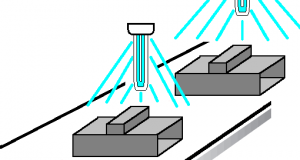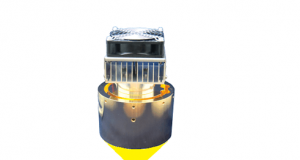[ Problem Point ] We wanted to a comparison test with a partial sterilization of the medium. [ ⇒Kaizen Point ] It was irradiated to the medium it with enclosure to ultraviolet light It is possible to adjust the wattage ...
Read More »Basic knowledge of Resin heating 3.The kind of resin -9 Light curing resin
1. About light curing Light is a collection of particles called photons, but the individual photons have the nature of the electromagnetic wave. Photon will have a unique energy, the same way as the electromagnetic waves and gather, is proportional ...
Read More »No.5 Weather resistance acceleration test of color steel plate
[ Problem Point ] We wanted to accelerated test the light fastness test in the laboratory. [ ⇒Kaizen Point ] It was irradiated with ultraviolet light in color steel plate It is possible to adjust the wattage was take a ...
Read More »Basic knowledge of Resin heating 3.The kind of resin -8 Liquid resin
About liquid resin The liquid resin is a resin that exists as a liquid at room temperature. In ISO 554-1976 has defined as a range of 20 ℃ ± 15 ℃ (5 ~ 35 ℃) “cold”. The temperature at which ...
Read More »No.4 Permeability test of UV cut glass
[ Problem Point ] We have not been possible to find a small UV lamp. [ ⇒Kaizen Point ] It was irradiated with ultraviolet light to the UV cut glass It is possible to adjust the wattage was take a ...
Read More »Basic knowledge of Resin heating 3.The kind of resin -7 The liquid crystal
What is the Liquid Crystal? The liquid crystal is a substance that is an intermediate state or such conditions, liquid and solid (crystalline). At present, those that express the liquid crystal structure is not found in other than the resin. ...
Read More »No.3 Test of photocatalyst
[ Problem Point ] It could not by varying test the amount of the ultraviolet rays. [ ⇒Kaizen Point ] It was irradiated with ultraviolet light for the photocatalyst It is possible to adjust the wattage was take a multi-specific ...
Read More »No.2 Cracking test of tire
[ Problem Point ] Small ultraviolet lamp was necessary to carry out the cracking test of tire. [ ⇒Kaizen Point ] A precision part was heated hotly using a halogen point heater. It could be heated hotly by a pinpoint, ...
Read More »Heat-tech News Letter – Vol. 010
■□■━━━━━━━━━━━━━━━━━━━━━━━━━━━━━━■ □■ Heat-tech News Letter – Vol. 010 2015-10-15 □■ ■━━━━━━━━━━━━━━━━━━━━━━━━━━━━━━■□■ □ INDEX ■1. Guidance of the new product ■2. Guidance of new applications ■3. Movie Library ...
Read More »UV equipment Product List
UV Irradiator Lab Kit UVP-30-LK UV Irradiator Lab Kit UVP-60-LK UV Irradiator Lab Kit UVL-115-LK Ultraviolet point type irradiation device UVP-30 Ultraviolet point type irradiation device UVP-60 Ultraviolet line type irradiation device UVL-115 ...
Read More »No.1 Irradiation to ultraviolet curable resin
[ Problem Point ] Shortening the resin hardening time has been required. [ ⇒Kaizen Point ] Curing speed is fast, it was able to shorten the working time. Since no cure and not irradiated with ultraviolet rays, constraints coating process ...
Read More »Basic knowledge of Resin heating 3.The kind of resin -6 Elastomers
Elastomer The elastomer is the generic name of industrial materials having rubber elasticity. It was first used from 1960 early in the shortened form of the elastic polymer (polymer resilient). In general, a synthetic rubber from natural rubber or old, ...
Read More »UV line irradiator
1. Features of UVL-115 The UV line irradiation device UVL-115 uses a rod-shaped UV lamp. 1) Built-in inverter ballast in a slim housing. Just supply 220V and you can irradiate ultraviolet rays. 2) UVL-115 has a strong bactericidal action. The ...
Read More »Ultraviolet light – Ultraviolet light irradiation and Ozone generation
Compact facilities, the maintenance cost is cheap Simpl , time shortening, lowcost Effective for every species of bacteria Durability bacteria less Sterilize it at normal temperature Do not let an agenda change in quality << Merit of the ultraviolet rays sterilization >> ...
Read More »Ultraviolet lamps price list
UV Ray line type Irradiator Lab Kit D/# Item Price US$ Ultraviolet point type irradiation device Laboratory-kit LKUVP-30 + UVPC With power supply and test stand. US$2,740 Ultraviolet point type irradiation device Laboratory-kit LKUVP-60 + UVPC With power supply and ...
Read More »No.49 Heating and drying of hot melt
[ Problem Point ] It is necessary to shorten the drying time of the hot melt [ ⇒Kaizen Point ] We were using the line condensing type halogen line heater. Since the line condensing type, to suit the application position ...
Read More »Basic knowledge of Resin heating 3.The kind of resin -5 Super engineering plastics
Super engineering plastics (hereinafter abbreviated SEP) is a reinforced resin of engineering plastic function. In part it is also referred to as a “Special engineering plastics.” SEP is a highly heat-resistant third generation synthetic resin with improved intrinsic properties of ...
Read More »No.28 Infrared heat caulking of resin boss
[ Problem Point ] Resin adheres to the punch, and this has been a cause of the processing failure. [ ⇒Kaizen Point ] We use tha halogen point heater heating the resin boss. Problem is solved because construction methods that ...
Read More »Manual power controller HCV Series for Halogen heater
Color universal design type HCV-CUD / HCVD-CUD A blue indicator light is used to create a color scheme that is easy for anyone to see. Please specify additional CUD to the model of your order. Standard type HCV Equipped with a ...
Read More »Basic knowledge of Resin heating 3.The kind of resin -4 Engineering plastics
Name of engineer plastics, DuPont was the first time used in the PR of the product name of the polyacetal resin “Delrin” in 1959. Since this resin is used in mechanical parts such as gears, it was given the designation ...
Read More »No.27 High temperature light sterilization of a spatula (scoopula)
[ Problem Point ] There was no one that can be easily high-temperature sterilization in a tabletop until now. [ ⇒Kaizen Point ] Because we use a halogen-point heater was easy to high-temperature sterilization. It was able to easily powered ...
Read More »Basic knowledge of Resin heating 3.The kind of resin -3 Thermoplastic resin
Thermoplastic resin is a solid polymer of one-dimensional structure (a set of polymer of linear structure), it is melted on heating and cooling will be solid. Even the glass-transition temperature or the melting point is softened by heating, it is ...
Read More »No.100 Differential temperature inspection of the heat pipe
[ Problem Point ] Good operability heating equipment was needed. [ ⇒Kaizen Point ] We ware heated heat pipe using the Air Blow Heater. It became possible to have multi-point measurement that could not until now. Moreover, since the non-contact ...
Read More »Basic knowledge of Resin heating 3.The kind of resin -2 Thermosetting resin
Thermosetting resin is a polymer material, which is also referred to as a thermosetting plastic.Raw material was fluidized by heating and pressing, it becomes the product shape.With that configuration to the bound of the monomer with a three-dimensional network structure, ...
Read More »No.99 Culture of anaerobic microorganisms
[ Problem Point ] It could not be freely temperature change Dummy-gas. [ ⇒Kaizen Point ] We use the Air Blow Heater DGH series for environmental, We made dummy gas change the temperature freely, and a cultivation test of an ...
Read More » HEAT-TECH Best Technology Online Shop
HEAT-TECH Best Technology Online Shop 























